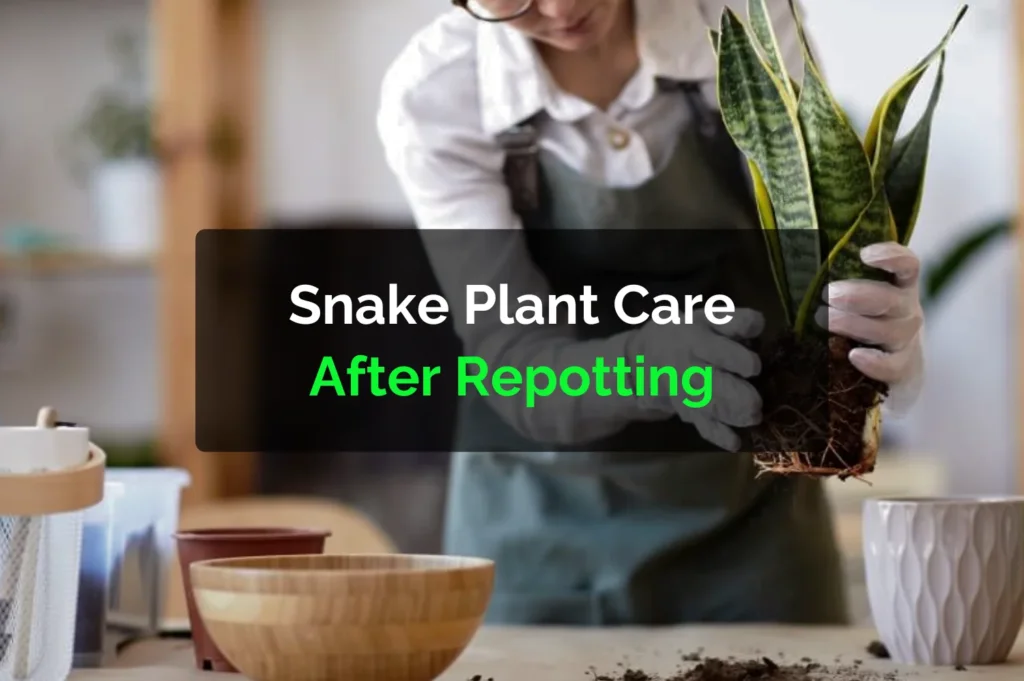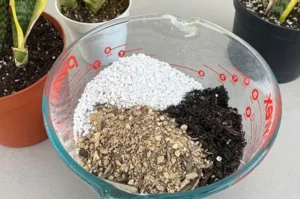Repotting your snake plant is a great way to promote growth and keep it healthy. But many plant owners often wonder what to do after repotting. Should you water it immediately? How much sunlight does it need? Is fertilizer necessary right away?
In this guide, we’ll cover everything you need to know about snake plant care after repotting, helping you avoid common mistakes and ensure your plant continues to thrive.
Why Do Snake Plants Need Repotting?
Before we dive into post-repotting care, it’s important to understand why repotting is needed in the first place. Snake plants (also known as Sansevieria or Dracaena trifasciata) are hardy and slow-growing. However, over time, they can outgrow their pots, leading to:
- Root crowding or root-bound plants
- Poor drainage due to compacted soil
- Slower growth
- Yellowing or drooping leaves
Repotting every 2–3 years helps refresh the soil, gives roots more space, and improves overall plant health.
What Happens During Repotting?
When you repot a snake plant, you’re disturbing its root system. While this is necessary, it can stress the plant temporarily. The key to successful care after repotting lies in helping your snake plant recover and adapt to its new environment.
1. Let the Plant Settle First
After repotting, your snake plant needs time to adjust. Avoid watering immediately. Instead:
- Wait 2–3 days before watering. This allows any root damage to heal and prevents root rot.
- Place the plant in a shady, warm spot. Don’t expose it to direct sunlight right away.
Letting the plant settle helps it recover from transplant shock and gives it a strong start in its new pot.
2. Watering After Repotting
Watering is one of the most important steps after repotting, and it’s often misunderstood. Snake plants are succulents, meaning they store water in their thick leaves and can survive drought better than overwatering.
Here’s how to water after repotting:
- Wait 2–3 days after repotting before giving it any water.
- Once you water, make sure the soil is dry at least 1–2 inches deep.
- Use room-temperature water and avoid soaking the soil.
- Allow excess water to drain fully from the pot.
Overwatering is the number one killer of repotted snake plants, so always err on the side of caution.
3. Keep the Light Indirect
After repotting, your snake plant will be a bit sensitive. Although they love light, direct sunlight can stress a recently repotted plant.
- Place the plant in bright, indirect light.
- Avoid windows with intense afternoon sun for the first week or two.
- Once the plant adjusts, you can move it to its normal light conditions.
If you repotted during winter or in a low-light environment, consider using a grow light for extra support.
4. Don’t Fertilize Immediately
Many plant lovers assume that repotting means it’s time to feed the plant. But this can do more harm than good.
Here’s why you should hold off on fertilizing:
- Fresh potting soil often contains nutrients already.
- Fertilizer can burn the roots, especially if they were damaged during repotting.
- It’s better to wait 4–6 weeks before applying any fertilizer.
When you do start fertilizing, use a diluted, balanced fertilizer every 1–2 months during the growing season (spring and summer).
5. Monitor for Signs of Stress
It’s normal for your snake plant to show minor signs of stress after being repotted. Common symptoms include:
- Slight drooping or curling of leaves
- Slower growth for a few weeks
- Minor leaf discoloration
Keep an eye on your plant for the following issues:
| Problem | Possible Cause | Solution |
| Yellowing Leaves | Overwatering | Let the soil dry completely |
| Mushy Base | Root rot | Remove affected roots and repot in dry soil |
| Wrinkled Leaves | Underwatering | Water thoroughly but allow to drain |
If stress signs last longer than a few weeks, inspect the roots again and check for pests or fungal issues.
6. Avoid Moving the Plant Too Much
Snake plants prefer stability. After repotting, try not to move the plant from place to place. Constant changes in light, temperature, and humidity can slow its recovery.
Choose a spot where the conditions are stable and consistent:
- Temperatures between 60–80°F (15–27°C)
- Away from cold drafts or heating vents
- Moderate humidity levels (not too dry or too humid)
This calm environment gives your plant the best chance to bounce back.
7. Be Patient With Growth
It might take several weeks before you see any new growth. That’s completely normal. After repotting, the plant focuses its energy on re-establishing its roots.
Once the roots are strong and healthy, new leaves will start to appear. Growth is typically faster in spring and summer, so if you repot in winter, be extra patient.
8. Trim Damaged Leaves
If you noticed damaged or yellowing leaves during repotting, it’s okay to trim them. Use clean, sharp scissors or pruning shears to remove the affected areas. This allows the plant to redirect energy to healthy growth.
Tips for trimming:
- Cut at the base of the leaf.
- Don’t remove more than 30% of the foliage at once.
- Always sterilize tools before use.
9. Use the Right Pot and Soil
If your plant still looks unhealthy weeks after repotting, double-check your pot and soil choice.
- Use a pot with drainage holes to prevent water from pooling.
- Choose a well-draining soil mix, such as cactus or succulent mix.
- Avoid heavy, moisture-retaining soils like garden soil or peat.
A breathable pot material like terracotta can help manage excess moisture.
Conclusion
Taking care of your snake plant after repotting doesn’t have to be stressful. With a little patience and proper care, your plant will bounce back stronger and healthier than ever.
Quick recap for post-repotting care:
- Wait a few days before watering.
- Keep it in bright, indirect light.
- Avoid fertilizing right away.
- Monitor for signs of stress and avoid overwatering.
- Give your plant time and space to recover.
Snake plants are tough and resilient. With the right care after repotting, they’ll reward you with lush green growth and low-maintenance beauty for years to come.






